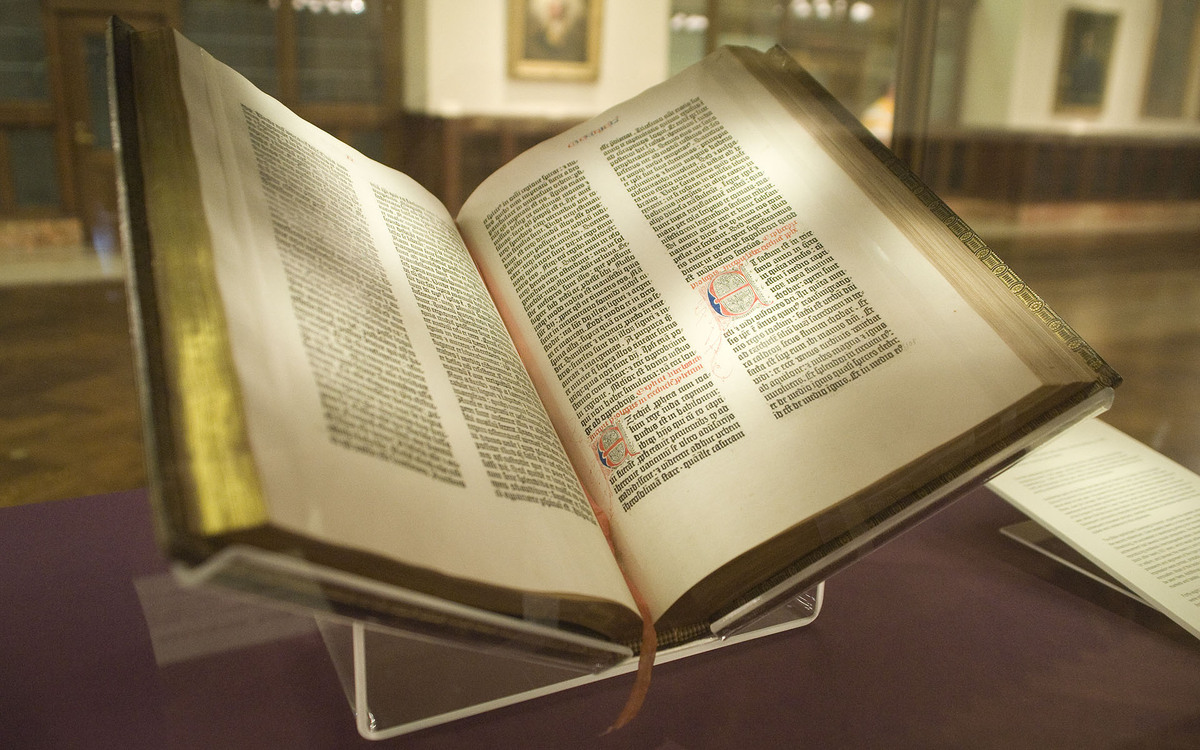
What makes the Gutenberg Bible so special? The Gutenberg Bible, printed in the 1450s by Johannes Gutenberg, is often hailed as the first major book produced using movable type. This groundbreaking invention revolutionized the way books were made, making them more accessible and affordable. Before this, books were painstakingly copied by hand, a process that took months or even years. The Gutenberg Bible stands out not just for its historical significance but also for its craftsmanship. Each page was meticulously printed, and many copies were hand-illuminated with intricate designs. Today, only 49 copies are known to exist, making it a rare and valuable artifact. This Bible symbolizes the dawn of the information age, marking a pivotal moment in human history.
The Gutenberg Bible: A Revolutionary Achievement
The Gutenberg Bible is often hailed as one of the most significant books in history. It marked the dawn of the age of printed books, changing the way knowledge was disseminated.
- The Gutenberg Bible, also known as the 42-line Bible, was printed by Johannes Gutenberg in Mainz, Germany, around 1455.
- It was the first major book printed using movable type, a revolutionary technology that allowed for mass production of books.
- Only about 180 copies of the Gutenberg Bible were originally printed, with 45 on vellum and the rest on paper.
- Today, only 49 copies are known to exist, and fewer than half of these are complete.
- The Bible is written in Latin, the scholarly and liturgical language of the time.
The Printing Process
Gutenberg's printing process was a marvel of engineering and innovation. It combined several existing technologies in a novel way.
- Gutenberg used a hand-operated printing press, which was adapted from a wine press.
- Each page of the Bible required the arrangement of thousands of individual pieces of type.
- The type was made from an alloy of lead, tin, and antimony, which was durable and easy to cast.
- Gutenberg's press could produce about 240 impressions per day, a significant improvement over hand-copying manuscripts.
- The ink used was oil-based, which adhered better to the metal type and paper than the water-based inks used previously.
The Impact on Society
The Gutenberg Bible had a profound impact on society, culture, and the spread of knowledge.
- It made books more affordable and accessible, breaking the monopoly of the scribes.
- The Bible's production marked the beginning of the Gutenberg Revolution and the age of the printed book in the West.
- It facilitated the spread of the Renaissance by making classical texts more widely available.
- The Bible played a crucial role in the Reformation by enabling the dissemination of Martin Luther's ideas.
- It contributed to the standardization of texts and the development of national languages.
The Artistic Value
The Gutenberg Bible is not just a technological marvel; it is also a work of art.
- Each page of the Bible features 42 lines of text, arranged in two columns.
- The text is printed in black ink, with red ink used for headings and initials.
- Many copies of the Bible were hand-illuminated, with elaborate decorations added by artists.
- The typeface used, known as Textura, was designed to mimic the handwriting of scribes.
- The layout and design of the Bible set a standard for future printed books.
The Legacy of the Gutenberg Bible
The legacy of the Gutenberg Bible extends far beyond its initial printing. It continues to be a symbol of human ingenuity and the power of the written word.
- The Gutenberg Bible is considered one of the most valuable books in the world, with individual copies worth millions of dollars.
The Gutenberg Bible's Lasting Impact
The Gutenberg Bible isn't just an old book. It marks a turning point in history. Before it, books were copied by hand, taking ages to produce. Johannes Gutenberg's invention of the printing press changed all that. Suddenly, books could be made quickly and shared widely. This helped spread knowledge and ideas faster than ever before.
The Gutenberg Bible also played a big role in the Renaissance and the Reformation. People had more access to religious texts, leading to new ways of thinking about faith and the world. Today, only about 49 copies of the Gutenberg Bible exist, making it a rare and valuable piece of history.
In short, the Gutenberg Bible didn't just change how books were made. It changed how people learned, thought, and connected with each other. Its impact is still felt today.
Was this page helpful?
Our commitment to delivering trustworthy and engaging content is at the heart of what we do. Each fact on our site is contributed by real users like you, bringing a wealth of diverse insights and information. To ensure the highest standards of accuracy and reliability, our dedicated editors meticulously review each submission. This process guarantees that the facts we share are not only fascinating but also credible. Trust in our commitment to quality and authenticity as you explore and learn with us.


